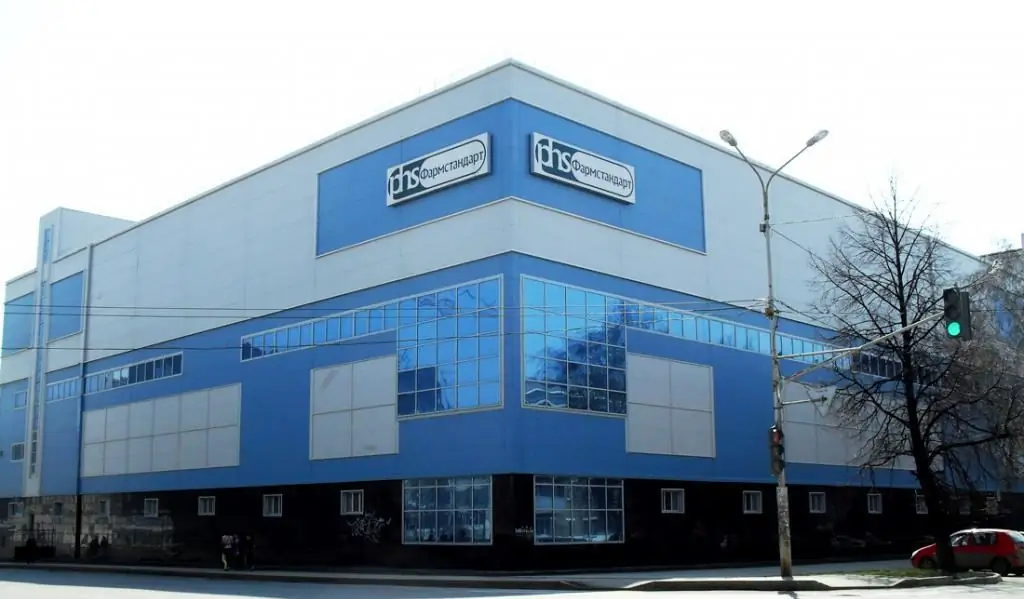2026 Author: Howard Calhoun | [email protected]. Last modified: 2025-01-24 13:10:25
The time of easy oil is coming to an end, and substandard hydrocarbons, including sour oil and bituminous rocks, have begun to deserve more and more attention. The total world reserves of heavy oil and bitumen amount to 790-900 billion tons, which is almost twice as much as light oil. In Russia, they range from 10 to 35 billion tons, and 14% of them are in the Komi Republic.
Oil of the republic is concentrated mainly in the Devonian deposits, and a fifth of it belongs to the Yaregskoye field. It is one of the oldest heavy oil fields on Russian territory, whose production is carried out both underground and surface methods.

Characteristics of the Yaregskoye field
Yarega oil was discovered in the Ukhta region of the Komi Republic on the northeastern slope of the South Timan, not far from the area of its transition to the Pechora depression.
The terrain is represented by a gently undulating swampy plain, descending to the northeast. Its relief was formed due towater-glacial and mining-destructive processes, as evidenced by some elements inherited from ancient tectonic structures. The reservoir-arch type oil deposit is hidden at a depth of 140-200 m and is contained in the sandstones of the middle and upper Devonian. The raw material of the field is represented by heavy oil, which has almost no paraffins. But it has an increased resin content and a significant viscosity.
The Yaregskoye field is confined to the Vezhavozhskaya, Lyaelskaya and Yaregskaya structures, in which the oil content is a single contour, and the total area is 127 square meters. kilometers. The total reserves are estimated at approximately 132 million tons of oil.
Field discovery
The first mention of an oil-bearing object dates back to 1890, when the expedition of F. N. Chernyshev worked on the Timan, examining the rivers of its southern and northern parts. In 1907, a group of geologists led by P. Polev conducted research on sites in the area of the Yarega and Chut rivers, but their research did not lead to any serious results. In 1931, the oilman I. N. Strizhov proposed to resume prospecting work in the area of the 1907 well. He outlined his line for the construction of subsequent exploration wells and moved according to it. In the spring of 1932, well No. 57 produced the first oil. A little later, another 2 tons of viscous thick oil was produced from well No. 62 on the “Strizhov line”. The drilling of the remaining wells confirmed the presence of heavy oil with high density.

Main development steps
History of developmentThe Yaregskoye oil field is conditionally divided into several important stages. At first, there were attempts to exploit it with wells from the surface, but this method did not allow to achieve significant indicators. From 1939 to 1954 began to carry out the development of mine fields according to the "Ukhta system". The essence of the work was that from the suprastratal horizon, located 20-30 meters above the roof, the formation was drilled along the grid of wells. The development was carried out on the natural regime of dissolved gas.
Development on a deviated borehole system was carried out in 1954-1974. Its essence was that from the mine working in the roof, the formation was drilled with gently descending wells. This system made it possible to reduce the volume of penetration by several times, but the oil recovery was the same as in the Ukhta one - 5.9%. Practice has shown that the productivity of mine development in natural mode is low, but at the same time it is several times higher than the results of surface well development. During the period of development of the field, a total of 7.4 million tons of oil was produced by mine development in two systems.
In 1968-1971, research work began at the Yaregskoye field, during which some systems of steam-thermal influence on the formation were tested. The research led to the creation of a thermal mining method, which began to be used on an industrial scale already in 1972, showing high technological efficiency.
Currently, deposits like Yaregskoye are operated by single-horizon, double-horizon and underground-surface systemsthermal mine development.

Lyael Square
On the Lyaelskaya area of the Yaregskoye field from 1973 to 1990. work was carried out on the surface development of the site with the application of steam-thermal impact on the oil reservoir. From the outer surface, 90 vertical wells were drilled using a five-spot system. The extraction of raw materials was carried out by means of steam cyclic stimulation of the formation and displacement mode. The indicators of such development were significantly inferior to the results of thermal mining development.
In 2013, the technology of steam gravity drainage (TGD) was first used on the Lyaelskaya area. This technology is based on the thermal effect on the working formation by counter horizontal directional drilling: the formation saturated with steam is heated, its fluidity increases to normal mobility and is pumped to the surface.
It is interesting to note that the TPGD technology was developed in Canada and remained unchanged for a long time until domestic specialists modernized it, putting into practice ultra-long counter drilling from different sites.

Not only oil
A feature of the Yarenga deposit is that, in addition to oil reserves, it also has huge reserves of titanium ore. Half of Russian titanium is concentrated here (about 49%). The deposit was considered oil until 1941, when geologist V. A. Kalyuzhny, imprisoned in Ukhtizhemlag, discovered ore concentrations of leucoxene in sandy oil reservoirs. More detailedthe study of titanium placer began to be carried out only in 1958.
Yarega ore is characterized by a peculiar mineral composition, in which leucoxene is the main industrial mineral. The uniqueness of titanium deposits lies in their genetic and spatial association with heavy oil deposits. The contours of their commercial reserves partially overlap. The study of the Yaregsky titanium deposit proved the versatility of silicon-titanium concentrates for the production of white inorganic and colored titanium pigments.

Prospects of the field
In January 2018, the construction of steam generator units was completed at the Yaregskoye oil-titanium field, which allows increasing oil production by 73%. The powerful complex is designed to generate steam of about 400 tons per hour, which is supplied to production wells. By the next stage of development, it is planned to reach the production volume already within 3.5 million tons per year.

Yarega expects not only an increase in oil production, in the near future its mines will have a significant functional expansion. LUKOIL-Komi, having a license to develop a titanium deposit, intends to mine annually up to 25,000 tons of titanium ore, which will be processed locally.
Recommended:
"Renault": manufacturer, history and date of creation, management, country, technical focus, development stages, introduction of modern technologies and car quality

The Renault manufacturer produces high-quality cars that are in demand in many countries of the world. The products were to the taste of Russian motorists. In 2015, the French concern produced the millionth car from the lines of the Russian plant
Diesel submarines: history of creation, boat projects, principle of operation, advantages, disadvantages and stages of development

The idea of creating a submersible moving under water, actually a prototype of a submarine (hereinafter referred to as a submarine), arose long before their actual appearance in the 18th century. There are no exact descriptions of underwater vehicles in numerous legends, nor in the Renaissance genius Leonardo da Vinci
HPP-1: history of the power plant, date of creation, capacity, address and stages of development

A museum exposition has been created on the territory of HPP-1, historical events caused its opening. Employees have collected exhibits, documentary collections from the archives with photographs and memoirs of old-timers. Models give an idea of the past of energy production and what it will be like in the future
Vitamin plant in Ufa: history and date of establishment, management, addresses, technical focus, stages of development, introduction of modern technologies and product quality

The life of a modern person takes place in a rather unfavorable ecological environment, accompanied by intellectual and emotional overload. You can't do without taking vitamins and minerals even in the summer. This material will focus on one of the oldest enterprises in Ufa, which is engaged in the production of useful products
Irkutsk heavy engineering plant: history and date of establishment, address, management, technical focus, stages of development, introduction of modern technologies and quality

Irkutsk heavy engineering plant is a city-forming enterprise producing equipment for leading industries in Russia. The company's products are supplied to the domestic market, finds recognition and demand abroad

